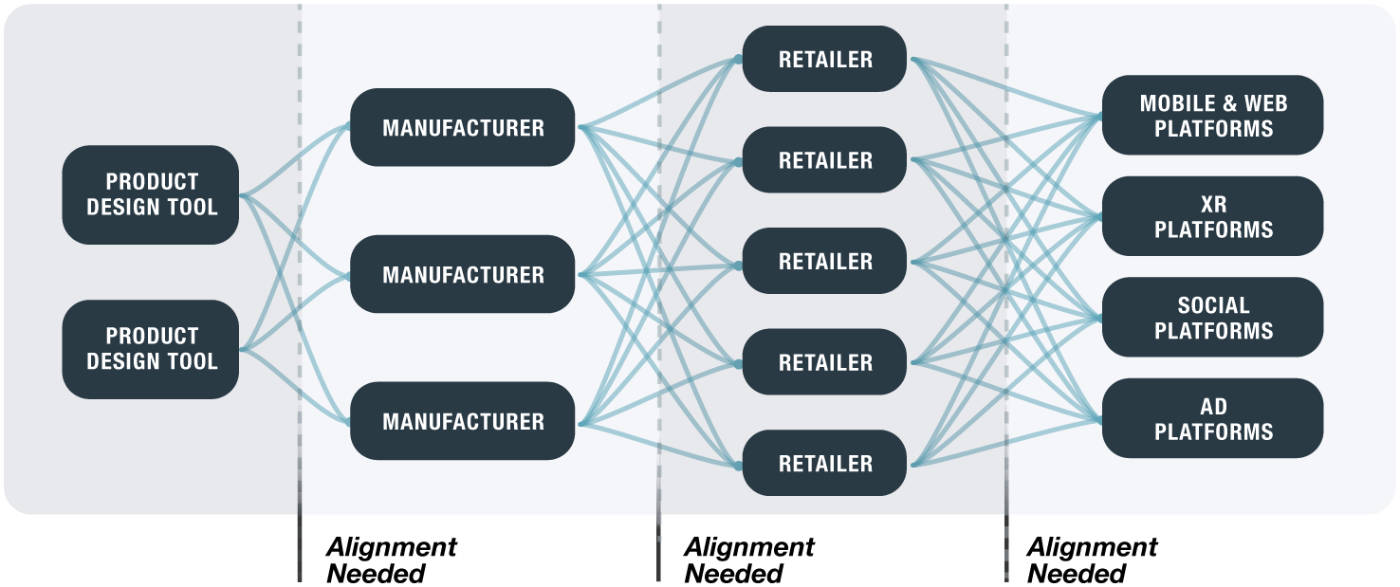
Snapshot of current distribution of real-time 3D content and opportunities for standards and guidelines to enable scalable deployment of virtual 3D products
April 25, 2019 – The Khronos Group, an open consortium of over 140 hardware and software companies creating acceleration standards for 3D graphics, Augmented and Virtual Reality, vision processing and machine learning, has today announced the formation of an Exploratory Group to investigate the creation of standards and guidelines for the production and distribution of real-time 3D representations of products, so they can be experienced realistically and consistently across all platforms and devices, such as mobile, Web and Augmented Reality (AR) or Virtual Reality (VR) solutions. To gather industry input, the Exploratory Group is open to any company without cost or IP licensing obligations. If there is industry support, Khronos stated that it will form a Working Group to enable any interested company to join the Khronos Group and participate under its multi-company governance process.
According to a Gartner press release earlier this month, “by 2020, 100 million consumers will shop in AR online and in-store” and “46 percent of retailers planned to deploy either AR or VR solutions to meet customer service experience requirements.” Gartner stated that “the impact of AR or VR in retail can be transformative”, and that “retailers can use AR as an extension of the brand experience to engage customers in immersive environments and drive revenue”.
Khronos stated that with Gartner’s research in mind, and with 3D expected to grow as a new shopping medium for product manufacturers, retailers and advertising platforms, industry players “are looking at how to scale production and achieve broad distribution for virtual products with optimized industry workflows to minimize costs.”
The global retail brands and technology companies proposing this initiative include: 3XR, 4D Pipeline, Adobe, Autodesk, Dassault Systèmes, Deloitte Consulting, Facebook, Ferguson Ventures, Google, Houzz, IKEA, JD.com, Lowe’s, Microsoft, NVIDIA, Pinterest, Qualcomm, Samsung, Shopify, Target, ThreeKit, Topline Furniture, Unity Technologies, UX3D, Wayfair, and Williams-Sonoma Inc./Outward.
The aim of this initiative is to enable 3D virtual products to be experienced realistically and consistently across a variety of endpoints, including search results, social feeds, ad units, in apps, on e-commerce websites, on mobile AR devices and VR/AR headsets, and on in-store displays. Standard specifications and guidelines would align and streamline interactions between retailers and manufacturers working with technology providers, content creators, and technology platforms distributing and displaying virtual products.
“Building visualization techniques driven by 3D is increasingly a vital element of creating the best possible experience for shoppers, as it provides an invaluable way to explore beautiful imagery with context and authenticity,” said Shrenik Sadalgi, Chair of the 3D Commerce Exploratory Group & Director of Next at Wayfair. “As we continue to transform the way people shop for their homes, we believe that 3D will be ubiquitous in the coming years and that it is imperative to standardize 3D content so it can be exchanged effectively and experienced consistently.”
Khronos added that the initiative would also leverage and guide the evolution of its existing standards such as glTF for transmission of photorealistic 3D assets, WebGL for interactive 3D applications on the Web, Vulkan for driving high-performance interactive 3D graphics, and OpenXR for enabling AR and VR applications that are portable across multiple vendor platforms.
Companies interested in finding out more and joining the Exploratory Group are invited to visit Khronos’ 3D Commerce Landing Page.
Image credit:The Khronos Group
About the author
Sam Sprigg
Sam is the Founder and Managing Editor of Auganix. With a background in research and report writing, he has been covering XR industry news for the past seven years.





